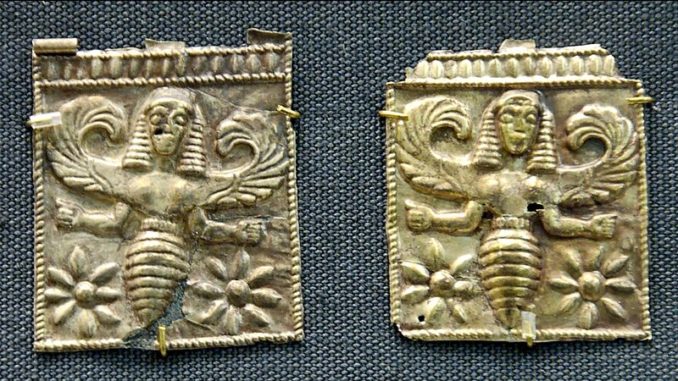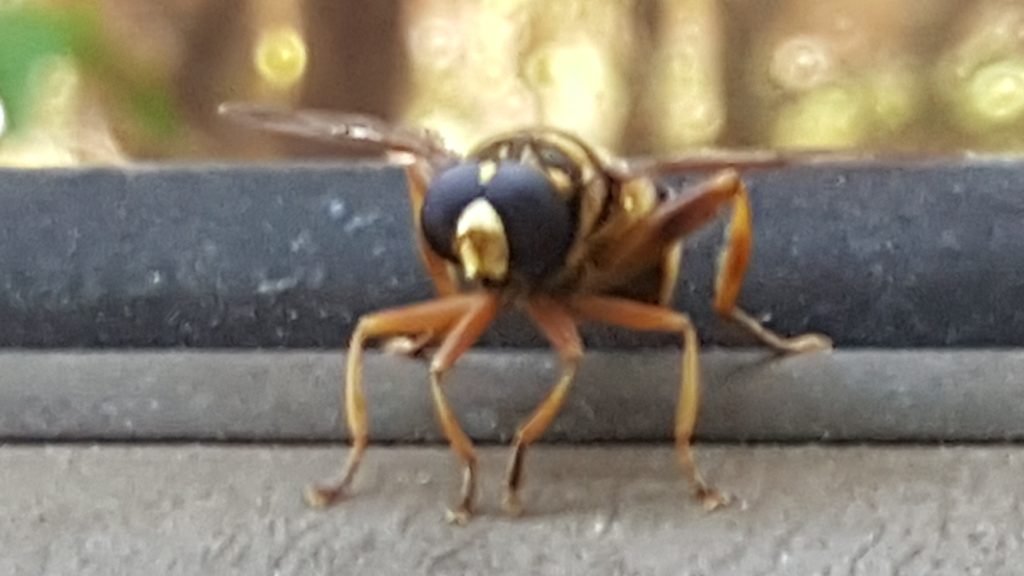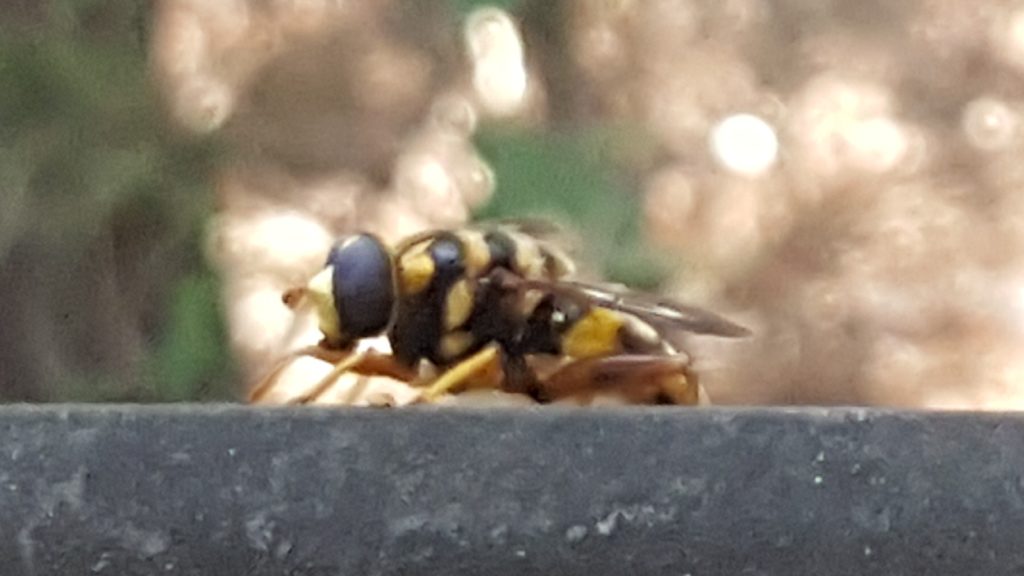
October has the best weather of the year. Well, around here anyway. The brutal heat and humidity of Summer is over. Since there’s not much rain, it’s fairly dry and the sky is blue and clear almost everyday (unless a hurricane brings moisture into the equation). The cooler temperatures reduce the number of mosquitos and other flying insects, which automatically results in a corresponding reduction in spiders and cobwebs. I don’t mind the spiders, they perform an important role in the environment, but I get tired of walking into cobwebs everyday during the Spring and Summer.
This afternoon I had a visitor, one of many that come around here constantly in the warm months. Representing different species of the order Hymenoptera, both large and small species, they come hover near me, completely motionless except for the high-speed beating of their wings which move so fast the human eye can only make out a blur. Sounding like tiny power tools, maybe a bandsaw or a chainsaw, they can quickly rotate their bodies in flight to face any direction, or dart away in a flash. Sometimes they’ll land on my pant leg or some other material and check it out. They seem interested in me (I might be the only human they’ve ever seen up close) and the man-made things around me. I’m convinced they’re demonstrating intelligence and curiosity. If I had to guess, I’d say some are yellow jackets and some are wasps, but I’ve yet to identify any specific species. It’s hard to take pictures of them with my cellphone, the camera has difficulty focusing on such small things. These visits have happened many times every year for as long as I’ve been out here.
Their apparent curiosity and intelligence are just part of the reason I’m taken with these animals. I first became a fan several years ago upon learning that many species of the order Hymenoptera hunt and kill spiders to provide food for their young. Some species specifically look for black widow and brown recluse spiders. This fact was especially relevant to me several years ago, the morning I found a dead female black widow on the air mattress in my tent, two days after finding a textbook brown recluse bite on my ankle. (Don’t tell my wife, I don’t want her to freak out or worry). I’ll never know if the bite was from a brown recluse or the black widow, but I surmise it was killed by the wasps that kept coming into my tent uninvited. (After that, I welcomed them with open arms). By the way, most spider bites are painless, including the bite of a brown recluse or black widow (most of the time) and the bite I received healed up and disappeared completely in a matter of weeks. (No, I did not seek medical attention although I probably should have).
The third and final reason these colorful insects have caught my interest is their need for water to build their nests. They come around my outdoor sink looking for it. I used to find small ones scavenging drops of water out of the hose above the sink, and have to shoo them away before I could turn the water on. Once I forgot to check; the rush of the water forced one down into the sink where it drowned. I started filling dog bowls with water and setting them away from the sink so the multitudes could get their water without getting in my way. Still, somehow a few managed to drown. This year I started filling small sardine tins with water, and leaving them on the back of the sink. No more drowning victims, but something interesting happened. The critters were skittish at first, flying off hastily whenever I came by the sink to wash my hands. Then they’d fly around crazily until I walked away, and they’d go back to get their water. As Summer went on, they got used to me, to the point where washing my hands while they were collecting water only inches away didn’t seem to bother them. You might think, well so what?
In the early years that I was out here, I was stung by wasps three or four times. The first time, I was picking up a plastic bag that had fallen on the ground, but didn’t see the wasp on the side of the bag. I must have grabbed the bag very close to the wasp, who interpreted it as an attack and defended itself. (Stung me on a finger – you bet it hurt – thought I was gonna die). The other times I was stung was when I got too close to a nest that I didn’t know was there; the only other time wasps are aggressive is when they are defending their young. And they remembered when I’d come too close before, so whenever I passed near, they’d come out and warn me in a, no-kidding-around, aggressive manner. This year has been different. It’s as if they recognize me as the guy that provides them with water. There’s been no aggressiveness this year, no matter how close I get to their nests.
This article was supposed to be about the differences between bees, wasps, yellow jackets, and hornets, but I got a bit carried away with the background story. Stay tuned for part two sometime in the future.
As you might guess, I don’t work in an office. I’m out in the woods, everyday and everynight, year-round, where I get to experience and observe nature firsthand. I love it. Here’s a couple of slightly blurry pictures of my visitor today.


Question of the Night: What’s your favorite month of the year, based solely on the weather?
